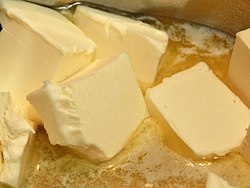
The churning of butter is an important part of Nepalese livelihood. Not only a part of day-to-day activity, it is a component of traditional culture and identity of Nepalese society. [1] [2] It involves the separation of butter from curd by the action of centrifugation using a series of traditional devices. [2]







